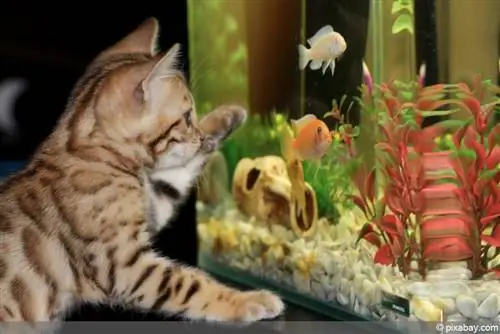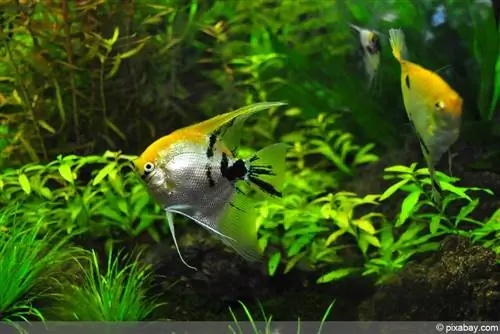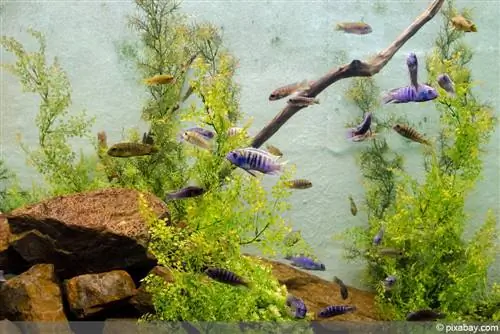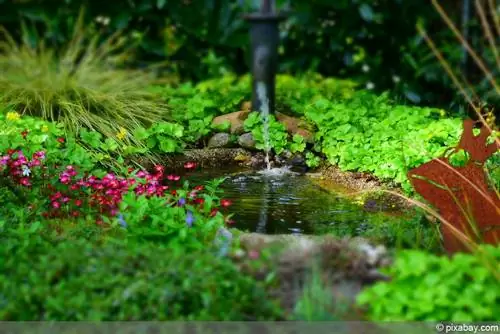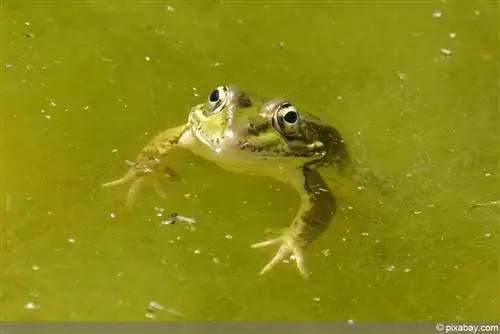- Author admin [email protected].
- Public 2023-12-17 03:39.
- Last modified 2025-06-01 06:48.
Algae growth is usually triggered by ammonium levels that are too high. In addition, fish droppings and unused fish food cause poor water quality. Many aquariums are simply overpopulated, with far too many fish crammed into a small space. This can't work, even with good care. Algae are spreading.
Green algae include
- Green dot algae - occurs with too much light and little CO2 and phosphate, increase CO2 and introduce phosphate
- Thread algae - occurs when there is too little carbon dioxide and carbon trioxide (Co2 and Co3), introducing nitrate and CO2
- Hair algae - occurs when there are no fast-growing plants and too many nutrients, as well as silicate, use fast-growing plants, algae eaters
- Fur algae - if the lighting is too long, there is too little CO2 and nitrate, illuminate for a maximum of 12 hours, increase CO2 and nitrate
- Algae bloom/floating algae - algae spores, darken the aquarium, use UVC clarifier, diatom filter
- Lint algae - occurs when there is a nutrient imbalance, ensure a balanced supply of nutrients, use algae eaters
Causal research

The causes of algae growth must be found and eliminated. In most cases this happens quickly. First the water should be tested. You can send it in or carry out a test yourself. Everything you need is available commercially (water analysis set). Now you have the values at hand and can determine which ones are incorrect. What needs to be considered is what causes water quality to deteriorate so much?
- Too many fish - too many excretions
- Too much food - nutrient-rich food sinks to the ground and decomposes there. Nutrients are released.
- Food too rich
- Too little water change
- Too few plants - food competitors for algae
- No manual removal of the various algae - aquarium dirty
- Too little CO2
- Too much artificial light
- Too much sunlight
- Too few algae eaters (fish, snails, shrimp)
Improve water quality
If the values are bad, a water change is recommended. As much water as possible should be replaced, ideally all of it. In addition, the aquarium lamp should not be on for more than 10 hours a day. Since algae like strong light, it is important to ensure that no sunlight falls on the aquarium. This sunlight is often the trigger for algae blooms.
He althy plants absorb a lot of nutrients, which are then no longer available to the algae. So if you have a large number of plants in the aquarium, they will produce less algae. Fast-growing stem plants are particularly useful. Algae-eating fish, snails and shrimp can also be used.
Green algae - combating the causes
If the green algae comes back after changing the water, usually because too little water was removed, you have to see how you can get rid of it. A weekly water change of between 25 and 50 percent does a good job.
- Weekly water change - at least 25 percent
- Also protect the aquarium from sunlight
- Reduce lighting to 10 hours.
- Manual removal of algae - select control according to the type of algae
Beard algae can be removed by rubbing the individual parts of the plant with your fingers
- Are eaten by the net brush algae eater
- Grow best when there is a lack of CO2
- May strong currents in the pool
- Love Nitrates
Green algae - Plane the windows with a sharp blade, window cleaning sponge, rub off the leaves with your fingers
- Mostly due to CO2 deficiency
- Strong current in the pool
- High nitrate levels
- Fight with ASS Ratiopharm 500 mg tablet - 1 tablet per 100 l of water
Thread algae - fish out with tweezers, weekly when changing the water
- Incorrect lighting
- Too few plants
- High current
- Possibly. Install CO2 system
- Use algae eaters
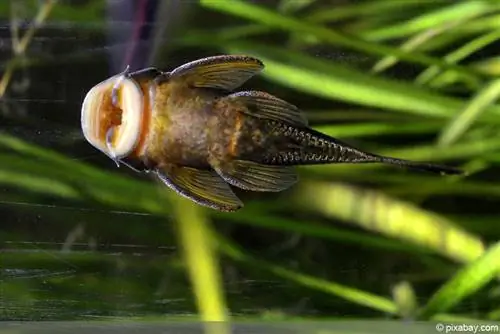
The use of chemical algae control agents should be used as a very last option. It is better to avoid chemicals. The products usually also harm the plants in the water and sometimes also the fish. Although the products work reliably, the dead algae also have to be removed from the water. They in turn pollute the water. Chemical agents usually only help for a short time and do not solve the problem. This can only happen if the cause of the algae growth is found and eliminated.
Conclusion
Green algae are present in every aquarium. That's not a bad thing. It only becomes critical when they multiply en masse. The important thing is to find out what causes this growth. Often it is too much artificial light, but sunlight can also trigger proliferation. Additionally, nutrients can be the problem, both too much of them and too few of them. The only way to find out is to do a water test. You can then work with the values. Experts recommend changing the water frequently and darkening the aquarium. This brings quick help. In the long term, the conditions in the basin must be improved. The fish population and the amount of food must be checked and possibly reduced, plants must be used, including algae-eating aquarium inhabitants, and the lighting must be set to a maximum of 10 hours. Usually several factors have to be taken into account together. Just one point is rarely enough.

